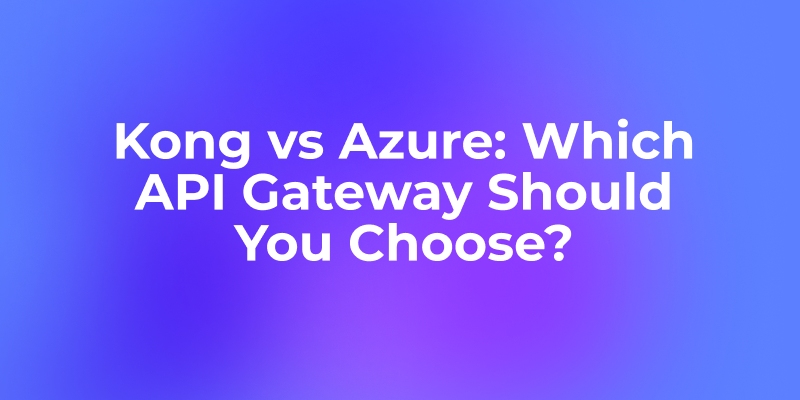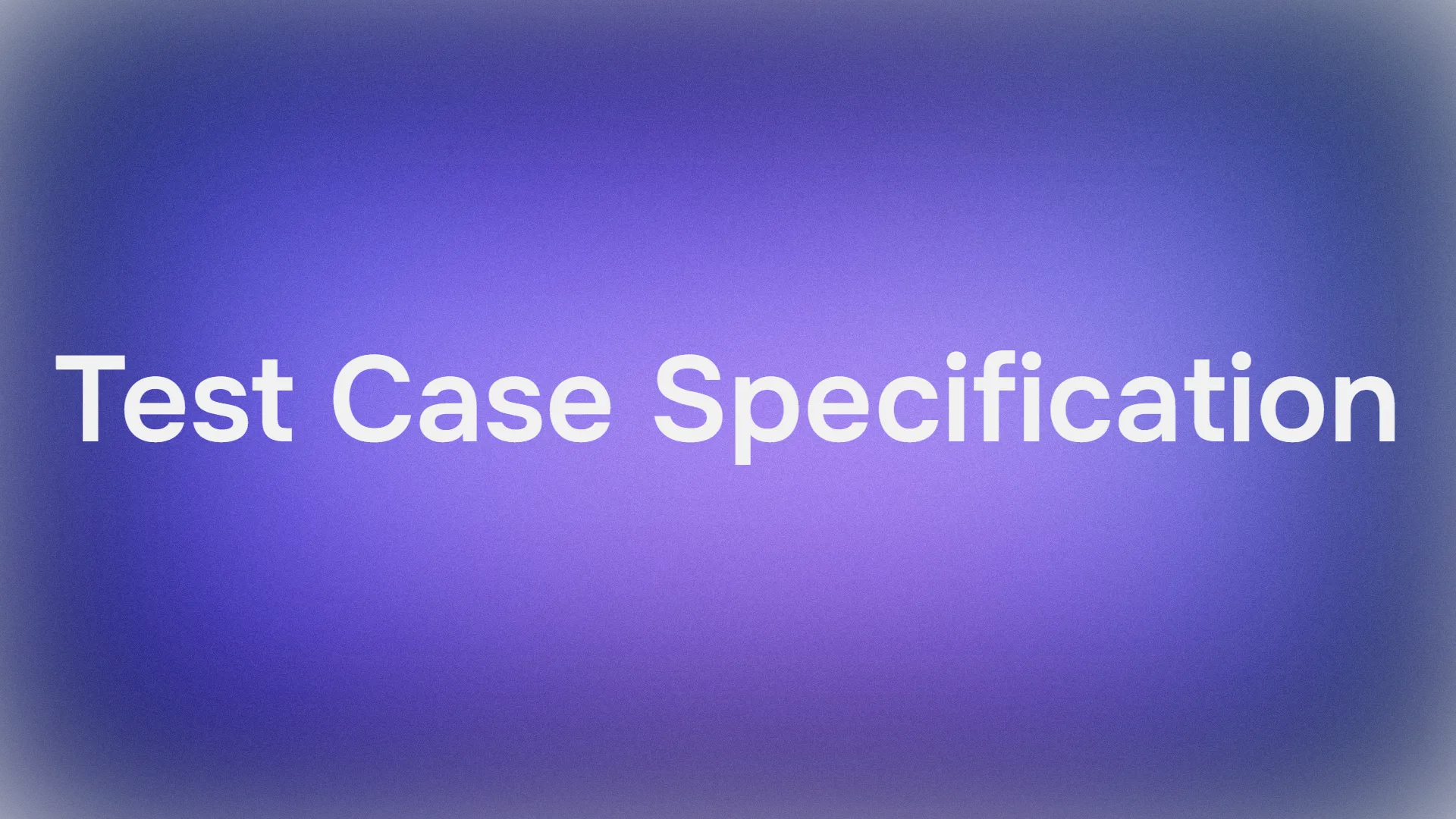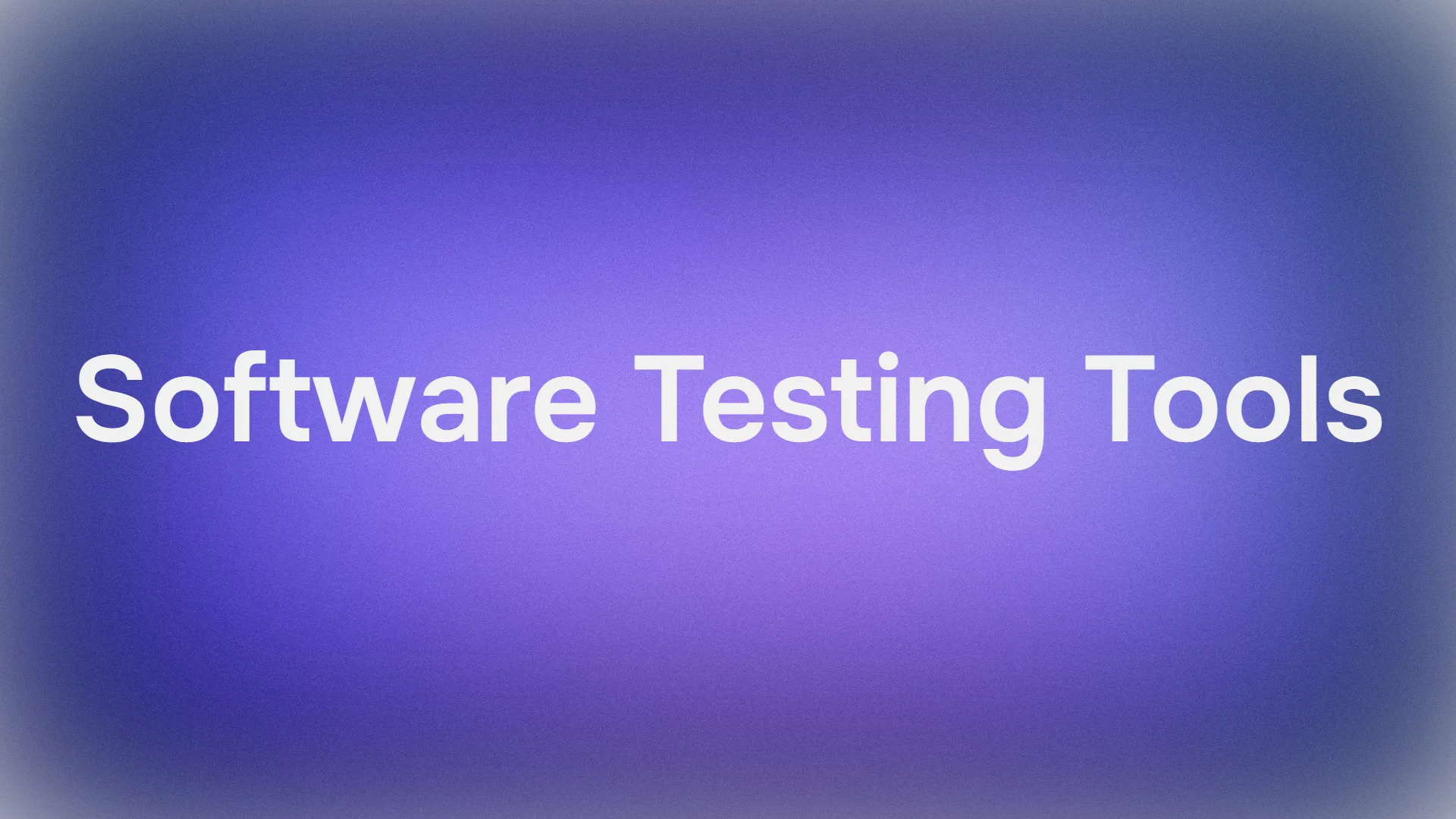Choosing the right API gateway can be the difference between a smooth, scalable architecture and a tangled mess of traffic rules, security policies and latency headaches. Whether you're a startup building your first cloud-native app or an enterprise modernizing legacy systems, your choice of API gateway matters more than ever.
If you’re reading this, you’re probably trying to modernize your app infrastructure or scale APIs and now you’re debating two industry heavyweights: Kong and Azure. Trust me, I’ve been there, wrestling with cost, flexibility, performance and that all-important developer experience. While both Kong and Azure are stellar, your best fit depends on much more than just a feature list.
Want an integrated, All-in-One platform for your Developer Team to work together with maximum productivity?
Apidog delivers all your demands, and replaces Postman at a much more affordable price!
Let’s roll up our sleeves and explore the real differences, strengths and decision-making tips for Kong and Azure in 2025!
What is Kong?

Kong began as an open-source API gateway and has rapidly evolved into a leading API and service connectivity platform. Built for high performance and flexibility, Kong is loved by developers for its:
- Open-source core (with paid enterprise options)
- Plugin-based architecture
- Cloud-agnostic deployment: Runs on-prem, multi-cloud, Kubernetes, or anywhere
- Lightning-fast API gateway performance
- Rich ecosystem for microservices, service mesh, and beyond
Kong is best known for its flexibility. Whether I want to run bare metal, inside containers, or in the cloud, Kong adapts. And with plugins, I can add everything from authentication to traffic transformations, rate limiting, or monitoring.
What is Azure API Management?

Azure API Management is Microsoft’s fully managed API gateway and management solution, deeply integrated with the Azure cloud. It excels at:
- Full API lifecycle management: design, publish, manage, secure, and analyze APIs from one dashboard
- Built-in developer portal for onboarding and docs
- Tight Azure security and identity integrations (AAD, Key Vault, VNET)
- Global scalability backed by Azure infrastructure
- Rich analytics and SLA-backed reliability
- Automatic scaling and monitoring in the cloud
If you're already using the Azure ecosystem—like Azure Functions, Logic Apps, or other services—Azure API Management (APIM) makes it easy to connect, manage, and secure your APIs.
Kong vs Azure: Side-by-Side at a Glance
| Kong | Azure API Management | |
|---|---|---|
| Deployment | On-prem, multi-cloud, Kubernetes, SaaS | Fully managed SaaS on Azure |
| Open Source | Yes (core) | No |
| Plugins & Extensibility | 80+ plugins (auth, rate limit, transformations, etc) | Extensible but less flexible, mostly via policies and scripts |
| Performance | Very high, low latency <1ms | High (Azure-optimized), may have higher latency for some operations |
| Management UI | Admin API + Kong Manager (Enterprise UI) | Powerful web portal, with dev portal out-of-the-box |
| Analytics | Good (datadog, statsd, etc), advanced in enterprise | Deep built-in analytics, Azure Monitor integration |
| Identity & Security | OAuth2, JWT, LDAP, custom plugins | Tight Azure Active Directory, OAuth, RBAC, IP restrictions, Key Vault |
| Docs / Developer Portal | Companion Kong Dev Portal | Auto-generated dev portal, code samples, docs |
| Ecosystem Fit | Cloud & language agnostic, Kubernetes native | Azure-centric, best for teams already using Azure |
| Cost | Open source = free (self-hosted); SaaS/enterprise paid | Usage-based, plus premium tiers for scale/support |
| Community & Support | Large global community | Azure global enterprise support |
Why Choose Kong And When It Wins
- Ultimate Flexibility: Invent your own stack, go multi-cloud, run anywhere
- Open-Source Appeal: Start for free, scale as you grow, no vendor lock-in
- Plugin System: Need custom logic, analytics, or security? Drop-in plugins for everything
- Cloud Native & Kubernetes Ready: First-class integration with k8s, service mesh, microservices
- DevOps Friendly: API-driven config, easy for automations
- Performance: Handles massive traffic with minimal resources—great for latency-critical workloads
When Kong Makes Sense
- I have a hybrid or multi-cloud architecture
- My team demands open standards and extreme customization
- I want to avoid platform lock-in
- We need an API gateway that’s blazing fast and production-proven
Where I Hit Roadblocks
- UI and configuration can have a learning curve (especially open-source)
- Dev portal isn’t as polished as Azure’s out-of-the-box
- Enterprise features (role management, analytics) are behind a paywall
- Strong community, but enterprise support is an add-on
Why Choose Azure API Management and When It Wins
- Turnkey Platform: Create, secure, and scale APIs with just a few clicks no infrastructure worries
- Security at Scale: Backed by Azure’s world-class security, identity, DDoS protection, auditing
- Stellar Developer Portal: Auto-generated documentation, code samples, OAuth playgrounds great for onboarding
- Unified Analytics: Track every call, error, or latency blip across global regions
- Policy Engine: Fine-grained controls for every API (transform data, validate JWT, enforce quotas)
- Enterprise Integration: Connect APIs to VNET, Key Vault, enterprise auth, and backends
When APIM Makes Sense
- We’re all-in on Azure, using its services and security
- Developer onboarding and documentation is a priority
- I want a fully managed experience: no patching, load balancing, or uptime worries
- Complex enterprise integration (AAD, VNET) is crucial
Where APIM Feels Limited
- Relies on Azure’s cloud; less flexibility for hybrid or on-prem
- Pricing can scale up quickly with usage/api calls
- Customization is limited compared to plugin-based gateways
- Not open source, so can’t self-host or inspect codebase
Real-World Example: Migrating APIs to Azure vs Kong
Recently, our team faced a tough migration from a legacy API stack. Here’s how we broke it down:
- Already on Azure? APIM integrated directly into Azure VNET and AD in hours.
- Needed hybrid deployment and on-prem presence? Kong ran side-by-side with our legacy backends, migrating one service at a time with minimal risk.
- Bring-your-own monitoring/analytics needed? Kong’s plugin system let us push logs to our data lake.
Security & Compliance
Security is non-negotiable, especially in API management.
| Category | Kong | Azure APIM |
|---|---|---|
| TLS/SSL | Yes | Yes |
| OAuth2/JWT | Yes | Yes |
| IP Filtering | Yes | Yes |
| WAF Integration | Via plugins | Native Azure WAF |
| Role-Based Access | Yes (RBAC) | Yes (Azure AD Integration) |
| HIPAA/GDPR Compliance | Enterprise | Premium tier only |
Azure APIM shines here for enterprises with strict compliance needs. Kong’s Enterprise offering covers most security bases but may require extra config.
Cost Analysis
Kong Pricing
Kong Gateway OSS is free, while Kong Gateway Enterprise and Kong Konnect are priced per node or request volume. That said, you manage the infra, so there may be hidden DevOps costs.
Azure Pricing
Azure’s pricing is tiered:
- Developer – $48/month (no SLA)
- Basic – $147/month
- Standard – $500+/month
- Premium – $2,800+/month
You get a fully managed service, but it gets expensive fast.
Cost Verdict
- Kong is cost-effective for tech-savvy teams.
- Azure is convenient but pricey at scale.
How Apidog Fits into the Picture
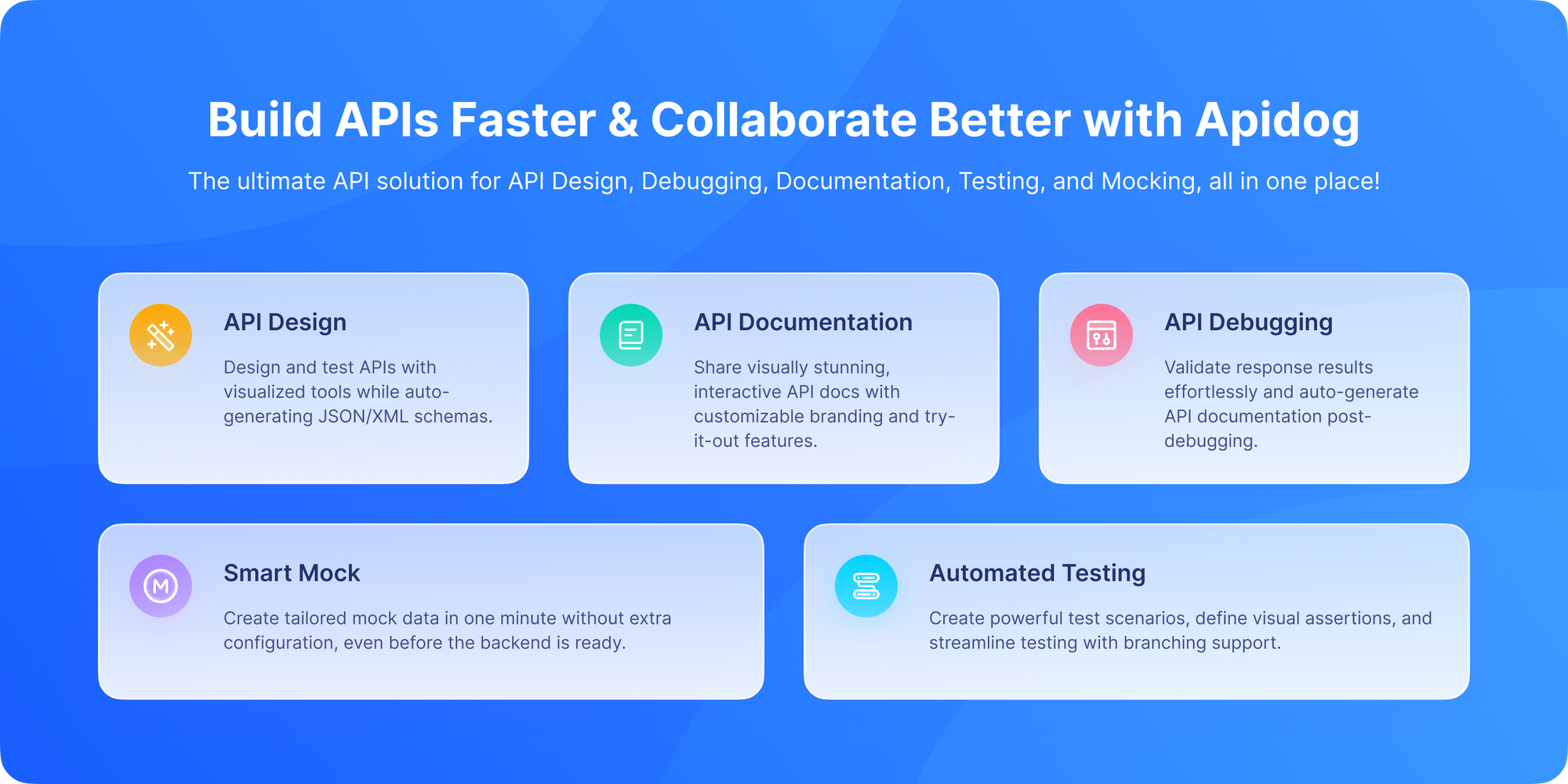
Alright, so you’ve picked your side in the Kong vs Azure API Gateway debate or maybe you’re still weighing the pros and cons. But here’s the truth no one tells you: choosing an API gateway is only half the battle. The real work starts with designing, testing, documenting and managing your APIs through their entire lifecycle.
That’s exactly where Apidog comes in.
What is Apidog?
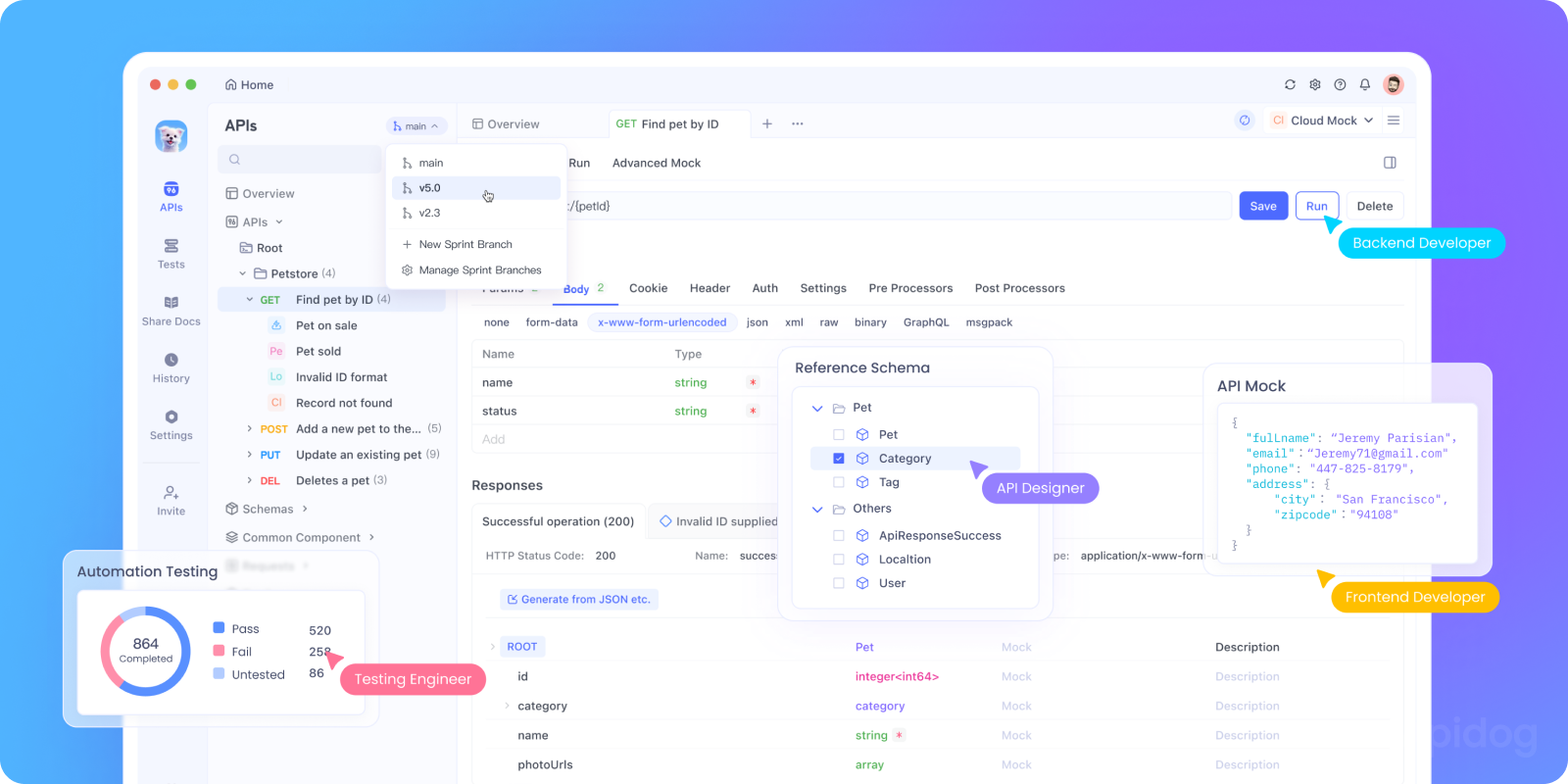
Think of Apidog as your one-stop platform for API design, testing, documentation and collaboration. It brings together the best features of tools like Postman, Swagger Editor and JMeter but with a smoother UX, real-time syncing and a cloud-native mindset.
Whether you’re running APIs behind Kong, Azure API Management or both, Apidog helps you:
- Design APIs visually using OpenAPI/Swagger standards
- Test APIs automatically with powerful assertions and chained requests
- Create mock servers to simulate backend responses during development
- Generate and host API docs effortlessly
- Collaborate across teams with built-in version control and access controls
In short: it’s built for modern API teams who care about speed, accuracy and automation.
Conclusion
Choosing between Kong and Azure API Management isn’t about picking a winner—it’s about picking the right fit for your architecture, team, and long-term strategy. Kong offers unmatched flexibility, open-source roots, and plugin-driven customization, making it ideal for teams that value control and performance. On the other hand, Azure APIM excels in ease of use, deep Azure integrations, and enterprise-grade security—perfect for organizations already embedded in the Microsoft ecosystem.
But remember, an API gateway is just one piece of the puzzle.
Once your gateway is in place, you still need to design, test, document, and manage your APIs with speed and precision. That’s where Apidog can make a real impact—streamlining your API workflow from start to finish, no matter which gateway you use.
So whether you’re building cloud-native microservices or modernizing monoliths, pair your gateway choice with the right tooling behind the scenes. Kong or Azure for routing and security. Apidog for everything else.
